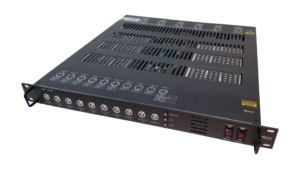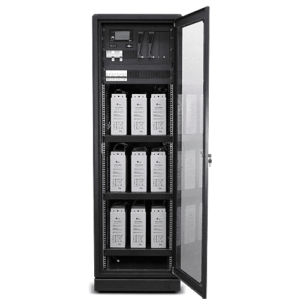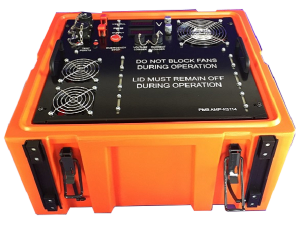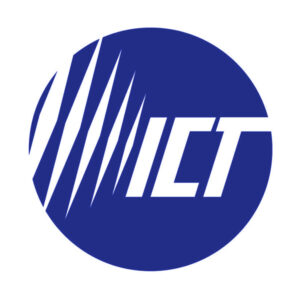Introduction
The Inter-Control Centre Communications Protocol (ICCP) TASE.2 (IEC 60870-6-TASE.2) is a critical standard for real-time data exchange between energy control centres in Australia and New Zealand. It ensures reliable, secure, and efficient operations for their expansive, distributed power grids.
Australia: AEMO oversees the National Electricity Market (NEM) and requires real-time data exchange via ICCP for participants like generators (above 30MW capacity), distributors, and transmission operators. They must share operational data, including power flow and grid stability metrics, to maintain system reliability.
New Zealand: Transpower manages the national grid and requires data from generators with capacities above 10MW, as well as from retailers and distributors for grid and market operations.
This article dives into ICCP TASE.2’s key functions and the complexities of integrating it into modern energy systems.
ICCP TASE.2: Key Protocol Functions
ICCP TASE.2 enables seamless peer-to-peer communication between control centres, often operated by different entities such as Transmission System Operators (TSOs) (e.g. Transpower New Zealand), and Distribution Network Service Providers (DNSPs). Key functionalities include:
- Analog and Digital Measurements: Sharing real-time data, such as frequency, voltage, and power flow levels.
- Status Information: Exchanging statuses of devices like circuit breakers, transformers, and other grid components.
- Control Commands: Issuing remote commands for managing devices, such as switching breakers or adjusting setpoints.
- Event Reporting and Alarms: Supporting real-time and historical reporting of operational events, faults, and alarms.
Core Components and Configuration of ICCP TASE.2
ICCP communication is based on the TASE.2 protocol, using the Manufacturing Message Specification (MMS) and IEC 60870-6 standard to define the objects used for data exchange over TCP/IP.
Setting up an ICCP TASE.2 system requires precise configuration of several elements to ensure secure, real-time communication between control centres. Key components include:
1st. Communication Profiles
ICCP TASE.2 uses Application Profiles to define the objects and services exchanged between control centres. The setup typically involves:
- Data Object Models: Mapping real-time grid parameters (e.g., load measurements, voltage levels) to ICCP objects.
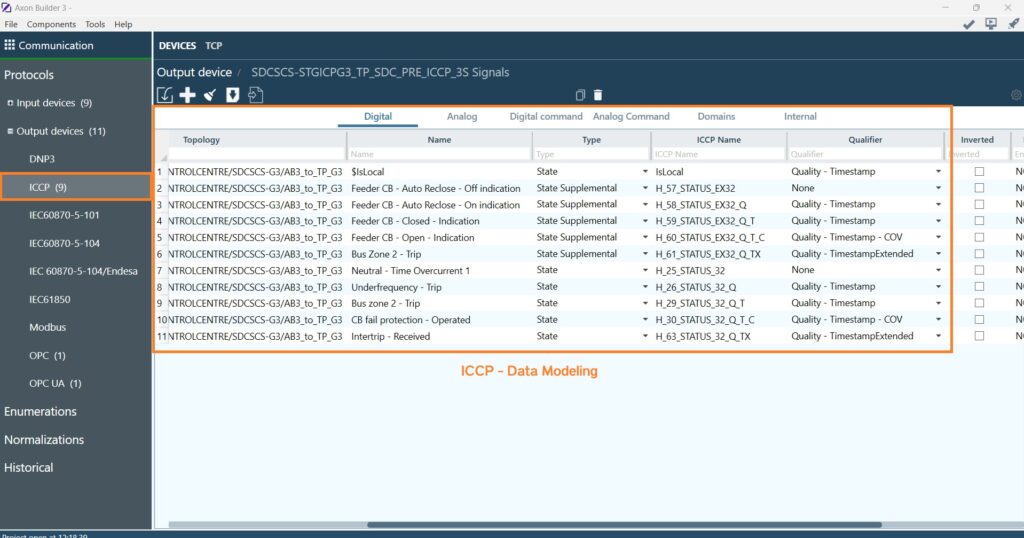
- Association Control Service Elements (ACSE): Used for setting up connections between peers, ensuring robust association control under ISO 8650-1 standards.

2nd. Real-Time Data Exchange – Data Sets and TransferSets
The heart of ICCP TASE.2 is the real-time data exchange between control centres. Datasets, which are collections of data points (e.g., analogue measurements, control commands), enable efficient communication.
Dataset Configuration:
Datasets are configured to include relevant data points for monitoring or control. These datasets should be defined on both the client and server sides of the ICCP communication link, ensuring consistency in data exchange.
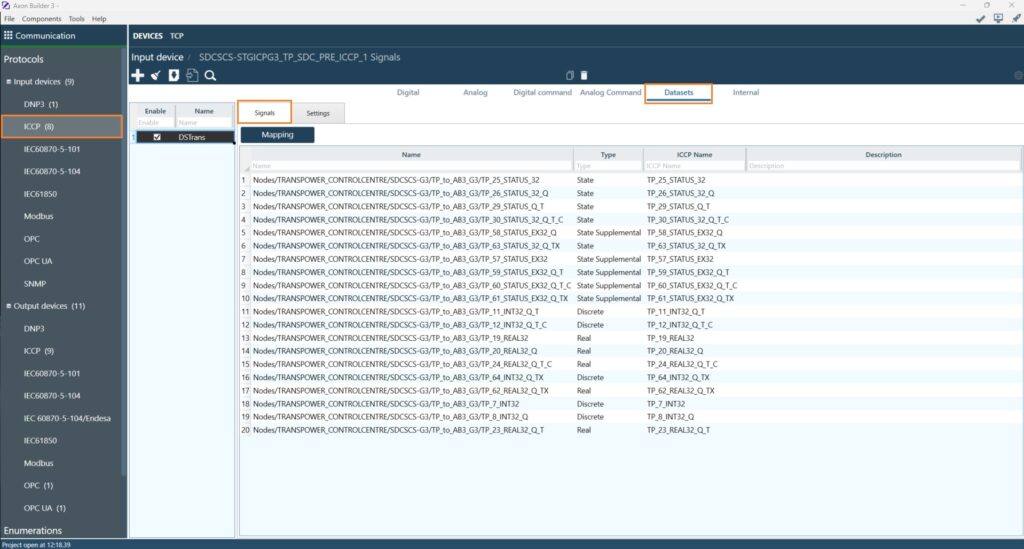
TransferSets: Managing Data Transmission
TransferSets determine how and when datasets are transmitted. They can be set up for change-based updates or time-based polling.
Change-Based Updates:
Data is sent only when a value changes (e.g., a breaker opens or closes, or the load on a line fluctuates). This method reduces unnecessary traffic and ensures only relevant updates are sent.
Time-Based Polling:
Data is transmitted is at regular intervals. This ensures periodic updates but may lead to higher bandwidth usage.
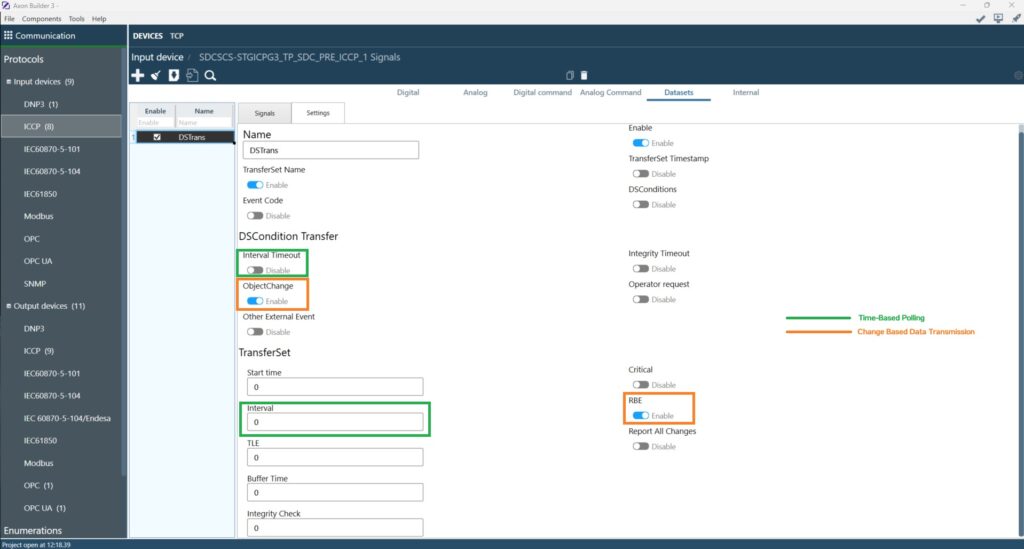
DSConditions: Triggers for Data Transmission
DSConditions (Dataset Conditions) define when datasets are sent, optimising network usage by only transmitting important updates.
Key DSConditions include:
Data Change (DSConditions_DataChange):
This condition triggers the transmission of the dataset when any value in the dataset changes. For example, if the voltage level on a monitored line exceeds a predefined threshold, this will trigger the transfer of the dataset.
Integrity Check (DSConditions_Integrity):
Integrity checks trigger dataset transmission at predefined intervals to ensure the accuracy of the transmitted data, even if no changes have occurred. This condition helps verify that the system is synchronized and operating correctly.
Periodic Update (DSConditions_Periodic):
This condition ensures that the dataset is sent at regular intervals (e.g., every 5 minutes) regardless of whether changes have occurred. It serves as a heartbeat mechanism to confirm that the connection between control centres remains intact.
Event Condition (DSConditions_Event):
Dataset transmission can also be triggered by external events, such as the detection of faults or alarms. For instance, if a fault is detected in a transmission line, an event-driven condition would trigger the immediate transmission of the dataset containing relevant fault information.
Key facts for Configuring a TransferSet:
When configuring a TransferSet, several parameters need to be defined:
- Dataset Association: The TransferSet must be associated with one DataSets that define the data points to be monitored.
- Transmission Mode: The mode can be configured as cyclic (time-based polling) or acyclic (change-based). If cyclic transmission is used, a time interval (e.g., every 10 seconds) must be set.
Buffering and Flow Control
During periods of high data traffic, such as during a grid disturbance, buffering mechanisms ensure that no data is lost if the communication channel becomes congested. TransferSets can be configured with a buffer size to temporarily store data updates before they are sent, ensuring that all critical information is transmitted in a timely manner once the congestion subsides.
Challenges in ICCP TASE.2 Integration
While ICCP TASE.2 provides a standardized framework for real-time data exchange; integration can present several technical challenges:
Data Mapping and Standardization
Differences in data models and naming conventions between different systems can lead to difficulties in integrating ICCP. Ensuring consistent data tag mapping is critical to avoid misinterpretation of measurements or control commands between centres.
Latency and Real-Time Performance
In high-load communication network situations, ensuring low-latency transmission is a priority. Configurations such as buffer sizes, polling intervals, and TCP window sizes must be optimized to reduce communication delays. Real-time testing with stress scenarios is necessary to ensure performance under various grid conditions.
Handling Large DataSets
As grid infrastructure grows, the amount of data exchanged over ICCP links can become immense. Scalability of the system is important, requiring careful management of bandwidth, buffer allocation, and data update mechanisms to handle increasing data loads without bottlenecks.
ICCP TASE.2 Security Considerations
Security is of utmost importance in ICCP TASE.2 implementations, given the critical nature of energy infrastructure. The following mechanisms are employed to ensure data security:
TLS Encryption
Secure communication is ensured using Transport Layer Security (TLS) to encrypt data between control centres. This prevents potential threats such as man-in-the-middle attacks or eavesdropping on sensitive grid control data.
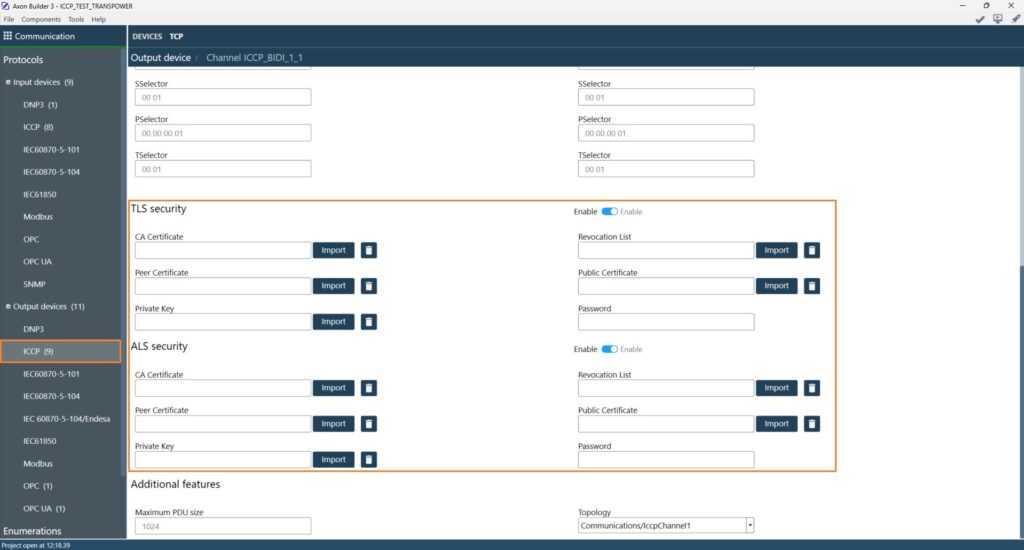
Authentication and Authorization
X.509 certificates are used for mutual authentication, ensuring that both communication parties are verified before data exchange begins. Additionally, role-based access control (RBAC) ensures only authorized systems or operators can issue control commands.
Redundancy and Fault Tolerance
ICCP TASE.2 implementations are typically designed with multiple redundant communication paths to ensure continued operation even if the primary communication channel fails. Failover mechanisms ensure that backup paths are automatically used when failures occur.
Conclusion
ICCP TASE.2 remains a critical protocol for ensuring real-time, secure communication between control centres in energy sectors, particularly for large, distributed grid operations. Proper configuration and testing of ICCP profiles, communication paths, security protocols, and real-time data exchange are vital for successful integration. Despite the inherent challenges of data standardization, latency management, and security, ICCP TASE.2 provides a robust and scalable solution for reliable grid communication.
For grid operators and energy market participants seeking to enhance their control centre communications, ICCP TASE.2 offers a well-established, secure, and scalable solution. Contact us today to explore how we can help you implement or optimise your ICCP integration and drive operational excellence in your energy infrastructure.

